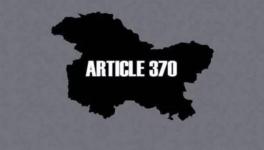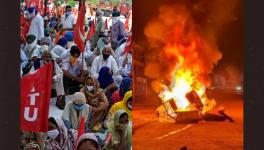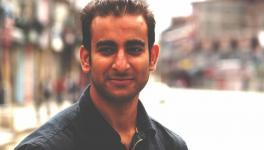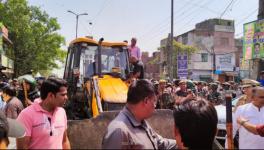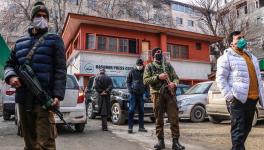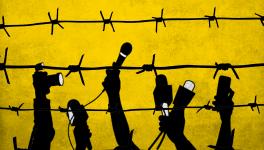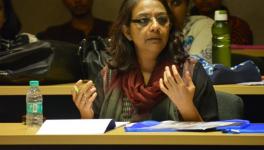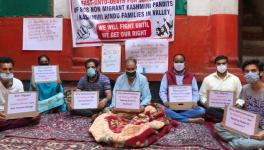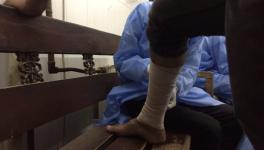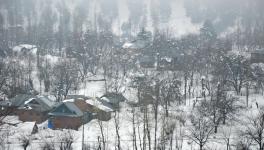Photojournalism in Kashmir: An Impossible Profession
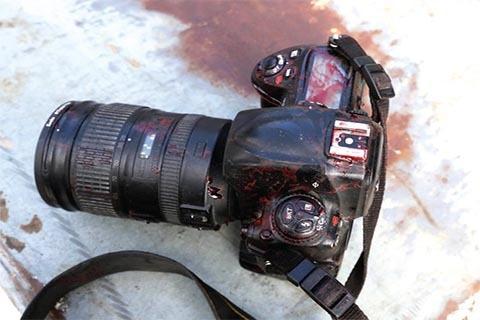
File Photo/ Greater Kashmir
In the last seventy years, the tale of the Kashmir dispute has been told in many ways. It has been narrated in news reports, books, in posters and through poetry, film, fiction and speeches. Yet, ever since the abrogation of the special status of the erstwhile state of Jammu and Kashmir, it is the photojournalists of the region who have borne the brunt of censorship. It is a necessary precondition of their work that photographers have to be present where events are unfolding, along with the early responders.
Ever since 5 August, the day the Centre decided to turn the state into two Union Territories, the photographers have simply come in the line of fire, of both the State and a people who have lost faith in journalism. For most of 2019, all working journalists reporting from the region have faced a firm but unstated gag on their work. But it is the photojournalists who experience the full force of this clampdown.
“We were not allowed to attend any government function after 5 August,” says senior photojournalist Tauseef Mustafa who works with the Agency France Press or AFP and has been covering the Kashmir conflict since 1993. Photographers were prevented from covering the ‘historic’ oath-taking ceremony that took place on 31 October 2018, when the first Lieutenant Governor of the newly-created Union Territory of Jammu and Kashmir took charge. Nor were journalists allowed to attend the press conference of the delegation of parliamentarians who were brought to Kashmir on the invitation of the Centre. “Only one news outlet, the ANI, was given permission to attend both these functions. This is unprecedented in Kashmir,” says Mustafa.
The result of not being able to cover even routine events is a sense of being ignored, especially in the photojournalism fraternity. Photographers cannot rely on dispatches from local sources or share information in the way that print journalists can. For instance, they are not allowed to attend functions organised by the Army in the region any longer. This may not sound very shocking to a non-Kashmiri, but in the Valley the armed forces are omnipresent and to be denied access to their events is tantamount to papering over a ubiquitous reality that controls the levers of life in the region.
Such a ban is also a major departure from the past. “We were not stopped from covering events when the Charar-i-Sharief siege took place in 1995, the siege of Hazratbal in 1993 or when the state legislative assembly was attacked in 2001,” Mustafa says.
On 10 May 1995, a mysterious fire broke out inside a prominent Sufi shrine located in the Budgam district of Jammu and Kashmir, which led to the evacuation of the militants who had holed up in it since March. ‘Mast’ Gul, the militant leader, eventually left India and returned to Pakistan. The incident claimed 27 lives, including two army men. Scores of photographers and local journalists covered the happenings extensively. Earlier, in November 1993, a shrine not far from the Srinagar city-centre had become the focal point of another conflict, whose reportage and photographs remain in the public domain. The last episode Mustafa is referring to was a 2001 car-bombing incident at the Legislative Assembly premises that claimed 41 lives including the three militants who carried out the attack. This, too, was covered by the media, including photojournalists.
Since 5 August, photojournalists have taken to travel in groups rather than individually due to the fear of being beaten or detained by government forces. “This time they [armed forces] treated us badly. They misbehaved with us even when we showed our identity cards. It was harassment. We photojournalists always covered the situation in 2019 in groups of 10 or 15. All were afraid of going alone to cover protests,” says freelance journalist Xuhaib Maqbool, who has been reporting on the Kashmir conflict since 2012.
Xuhaib was injured while reporting on a stone-pelting incident in the Rainwari area of Srinagar city during the mass agitation of 2016. He lost sight in his left eye from a pellet. “It was more of a target fire that day,” he says. But he feels that the situation is even worse in Kashmir today. “If any official asks us not to click pictures we cannot argue with him. Unlike 2016, after 5 August, photographers are even made to erase photos from their cameras. Also, in 2016, only I was a target, but now every one of us [photojournalists] is a target.”
When photographers travelled to Anchar, in the Soura locality of Srinagar city, they took to concealing their identity. “To cover the Soura incident you have to hide your memory cards and even your identity. You never know when you will be detained,” he said. Anchar had become an epicentre of protests against the government in 2019.
Xuhaib said that freelance journalists in Kashmir face more problems as they do not have the protection of an employer or organisation to watch their back. “You are on your own even if you are employed by a local news outlet in Kashmir. Let’s just forget about freelancers,” he says.
In the last week of August, the journalists Laxmi Murthy and Geeta Seshu, who work with the Network of Women in Media India (NWMI) and the Free Speech Collective (FSC), interviewed over 70 journalists in the Kashmir Valley and published a report, News Behind the Barbed Wire: Kashmir’s Information Blockade, in September. Their report finds that local journalists are being undermined in Kashmir, that they have alleged intimidation by the police and politicians and have reported alleged human rights violations in Kashmir after the special status was revoked.
“Women photojournalists at the front-lines have been doing their best to create a visual record of the happenings after the cataclysmic change brought on by the abrogation of Article 370 and related developments. One told us how the security forces were enforcing a strict clampdown on visual records of the unprecedented deployment of forces, and also of agitations against the forces. Both male and female photojournalists were regularly accosted and forced to delete footage of protests, especially stone pelting,” the report says.
Today, photojournalists are not expected to ask government officials questions. Not just that, they are expected to click photographs but not of the kind that can present the real picture of events in the Valley or critique the state’s actions directly or indirectly.
In 2019, even the coverage of mass agitations changed, because many citizens have lost faith in the power of the pen and the camera. Many people do not wish to cooperate, even with on-ground journalists: the change began to set in after the 2016 mass agitation in the Valley. The reason, Valley-based photojournalists say, is the arrival of television news channels. “People say that news channels do not show the real picture of Kashmir,” says Mustafa. Even when the photographers argue with people or try to persuade them that they are only taking still photos, people refuse to be photographed and deny access to people and places even after an event.
Besides, photo-journalists have to constantly meander around the strict travel restrictions imposed by state authorities. They have to leave at the crack of dawn if they want to cover a day’s assignment due to these restrictions. “We are simply caught between the people and the state. If we get leads about any incident, we get frightened to follow it up now. This was not so even when militancy was at its peak in Kashmir,” says Mustafa, who finds that even the security forces were more cooperative with journalists during the turmoil of the 1990s.
This would explain why journalists in Kashmir registered their first and only “small silent protest” against the communication blockade after 60 days of lock-down on 30 October 2019. The situation in Kashmir is so bad that neither government forces nor the people are ready to cooperate with the photojournalists. With the middle ground in Kashmir politics erased overnight on 5 August 2019, it is no surprise that both the forces and the common people feel like they are living on a razor’s edge.
The author is a freelance journalist in Kashmir. The views are personal.
Get the latest reports & analysis with people's perspective on Protests, movements & deep analytical videos, discussions of the current affairs in your Telegram app. Subscribe to NewsClick's Telegram channel & get Real-Time updates on stories, as they get published on our website.









